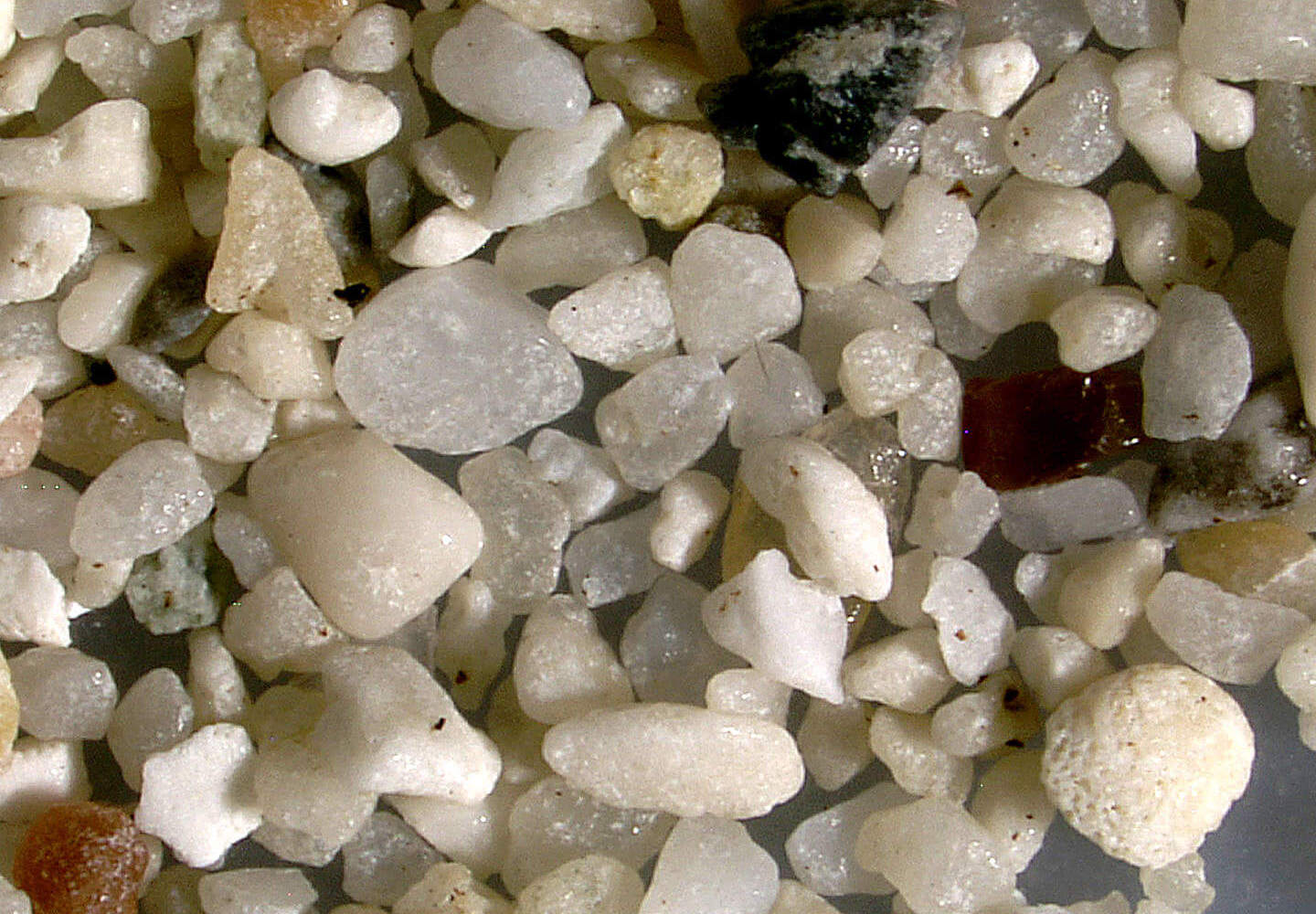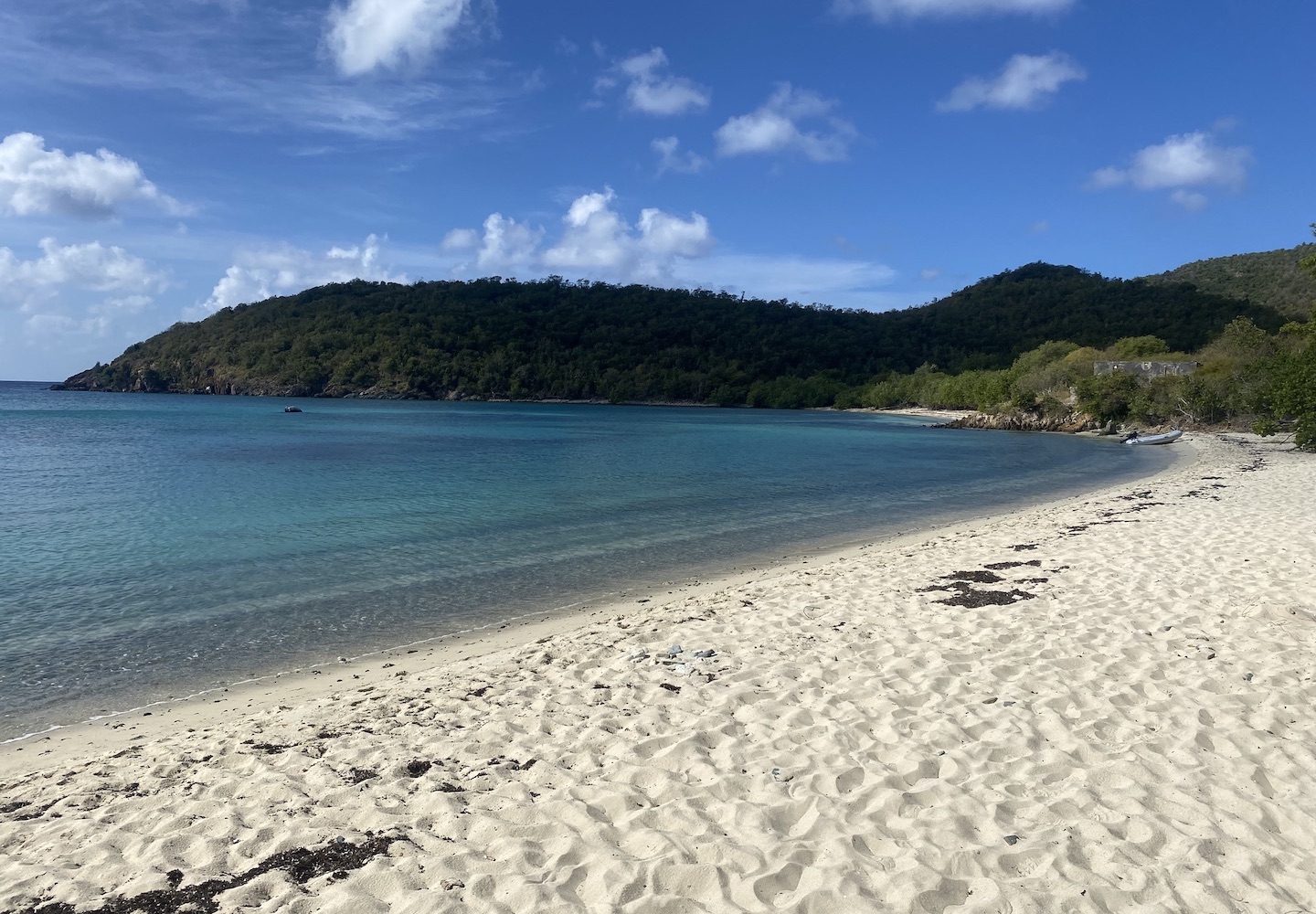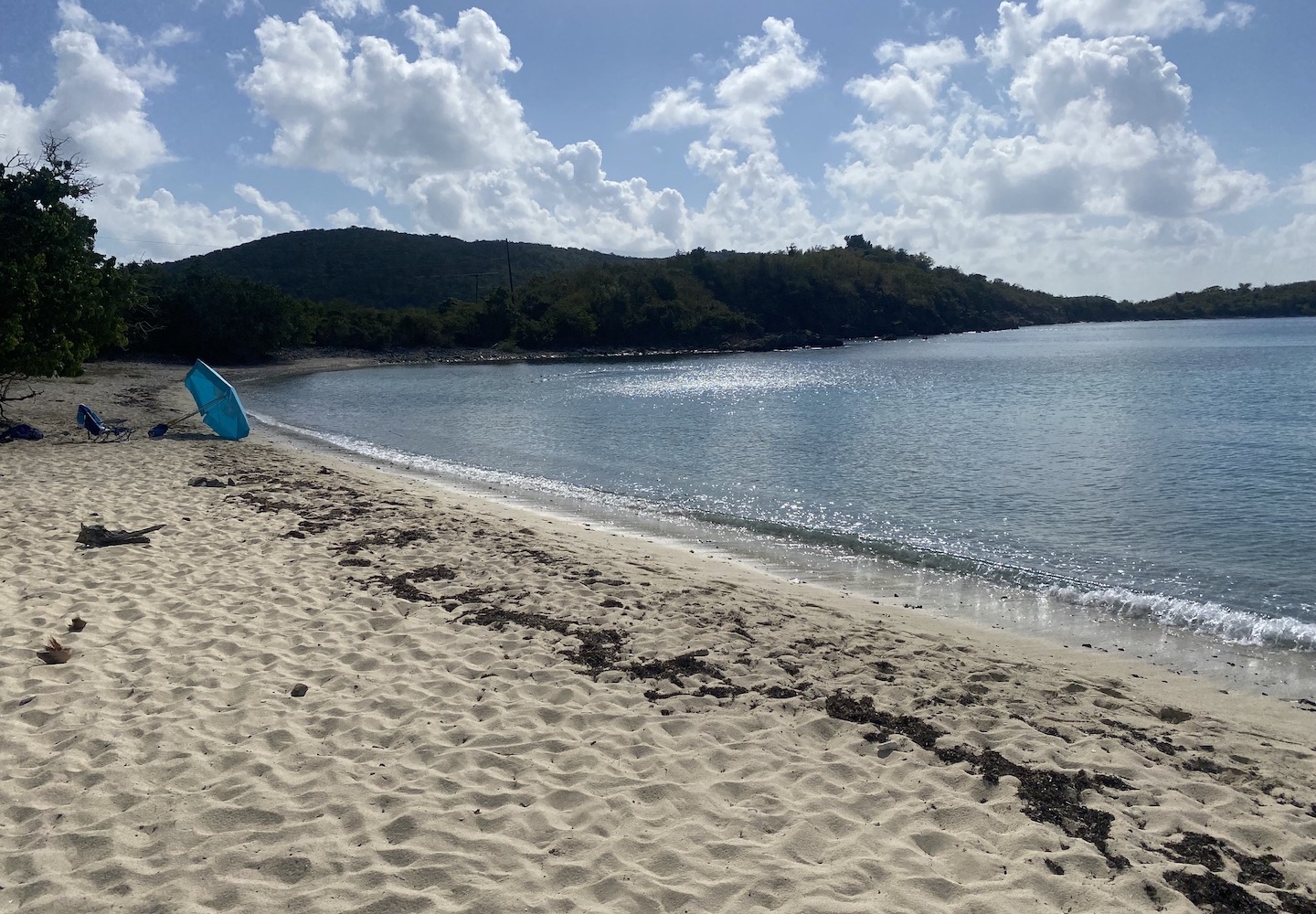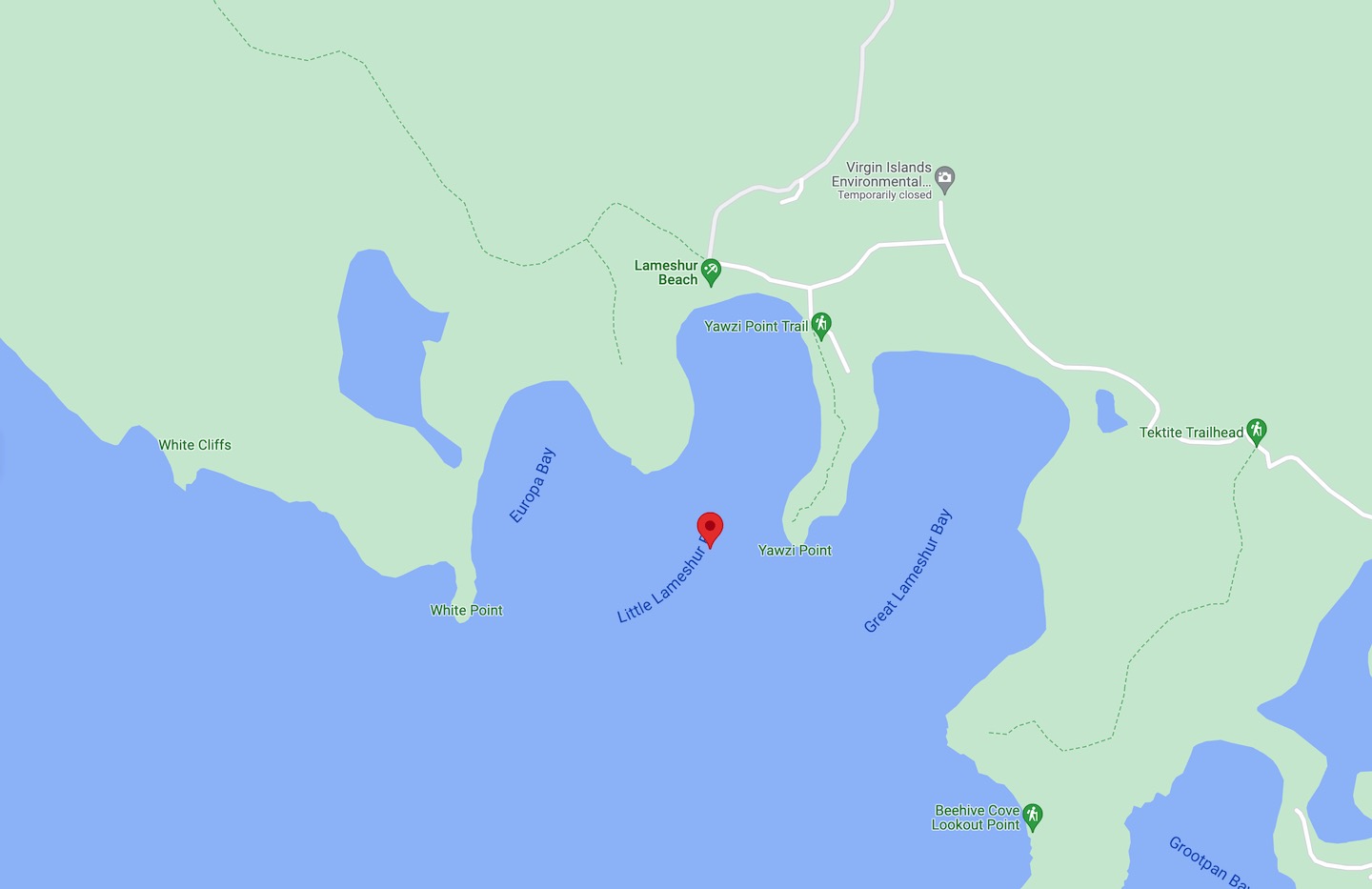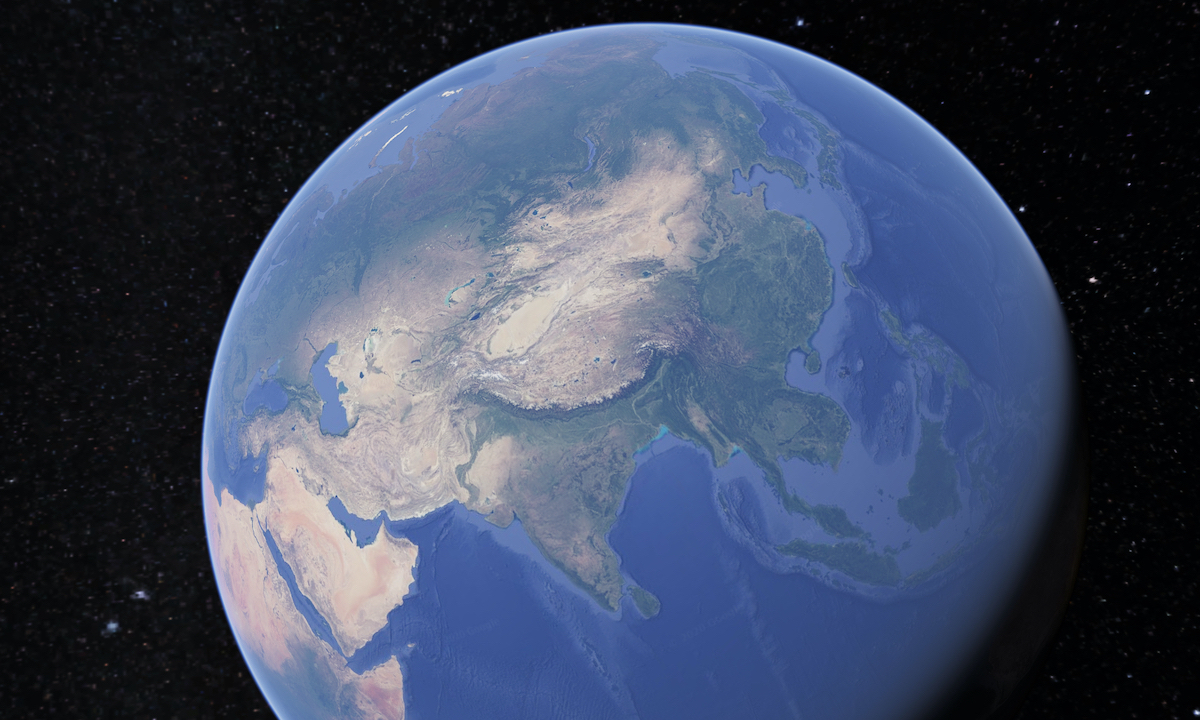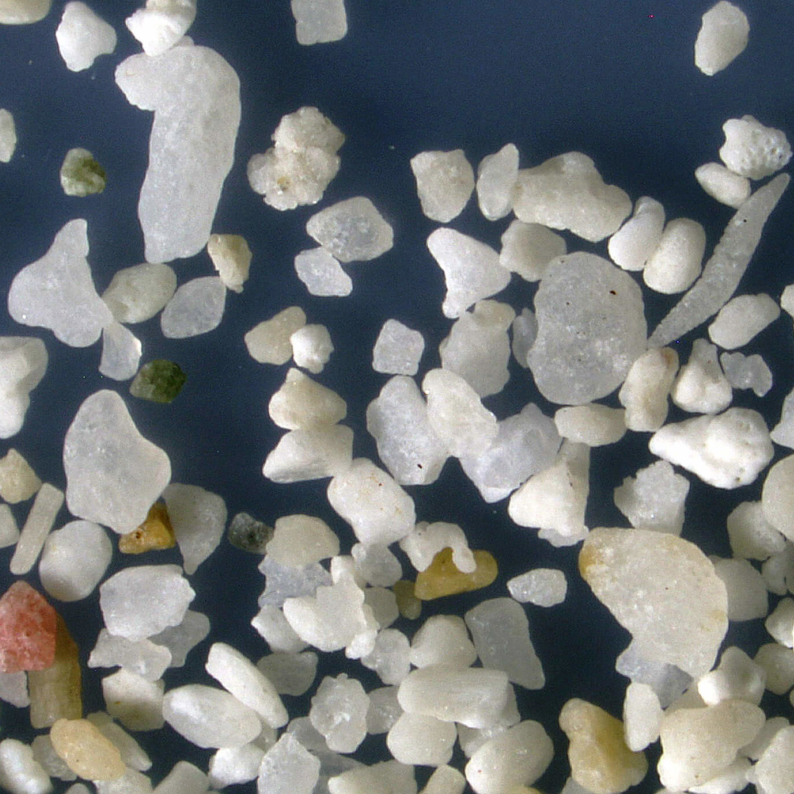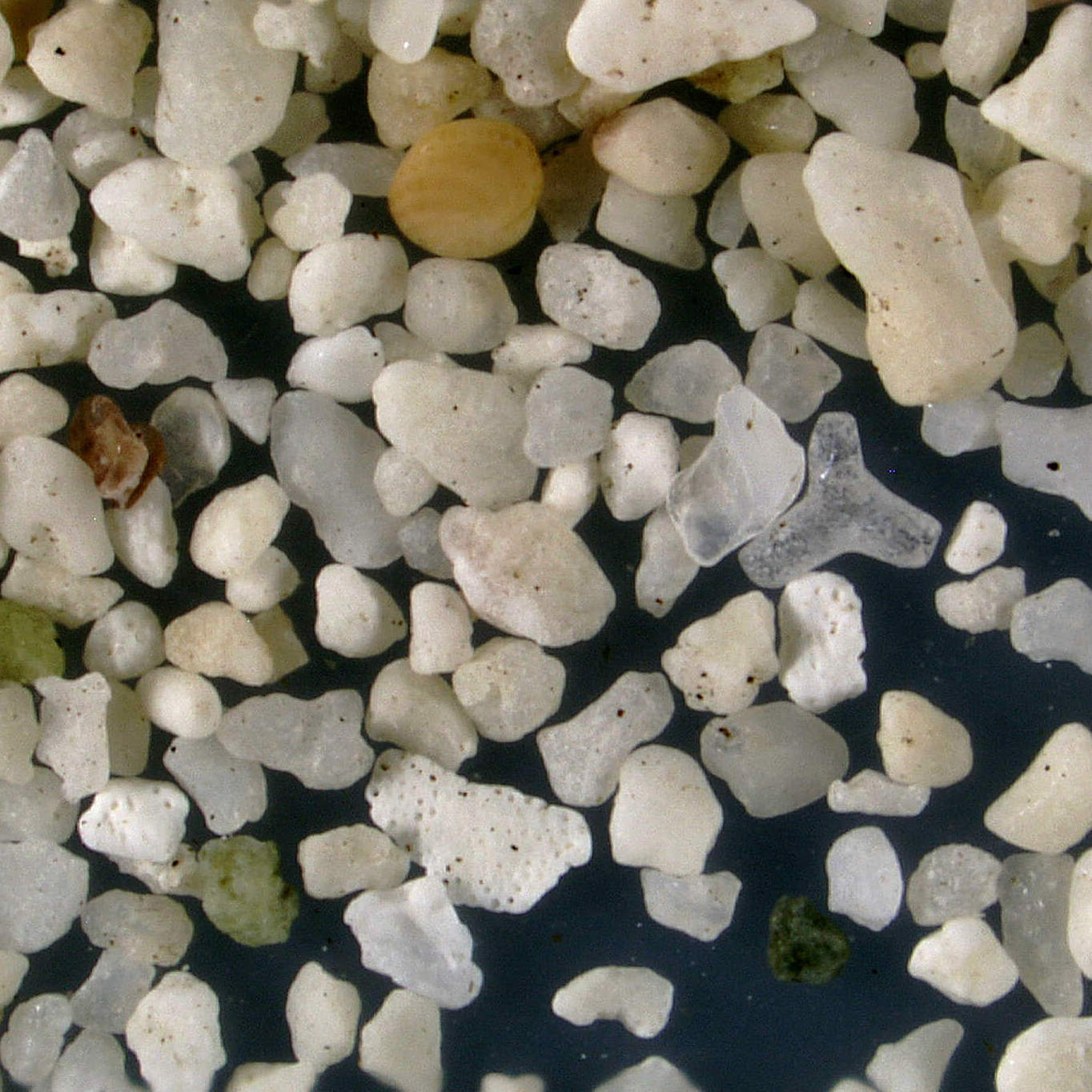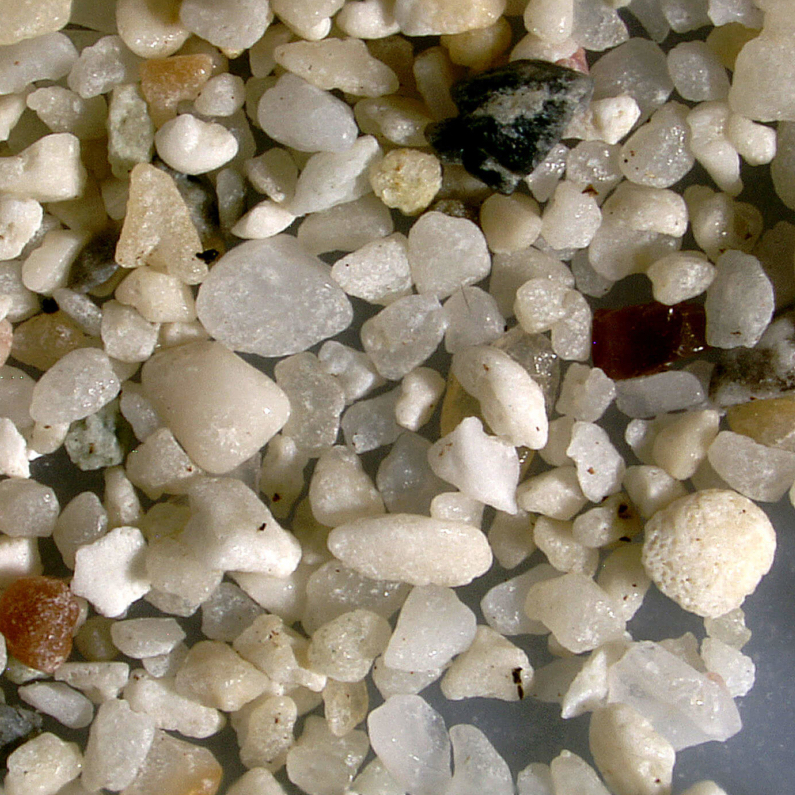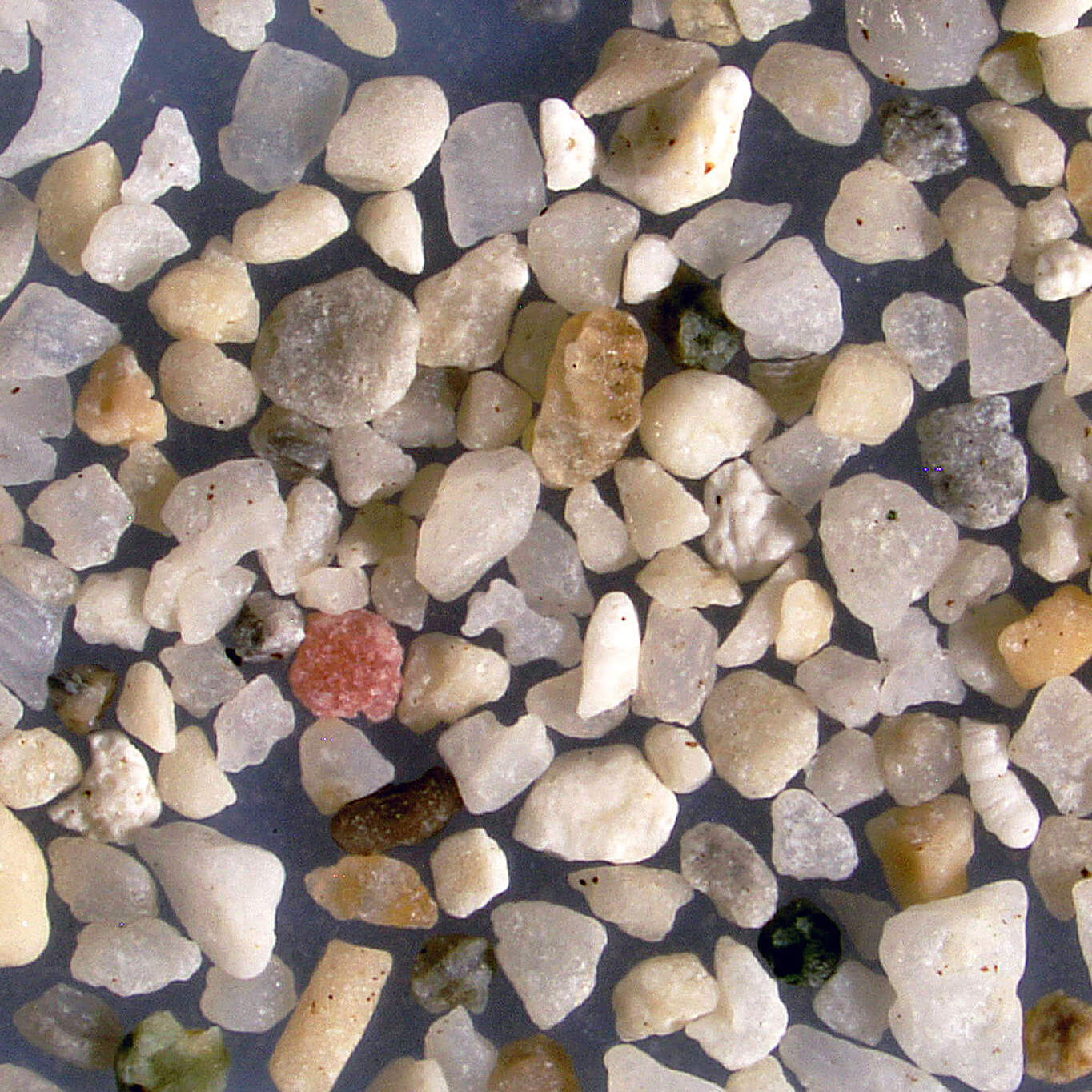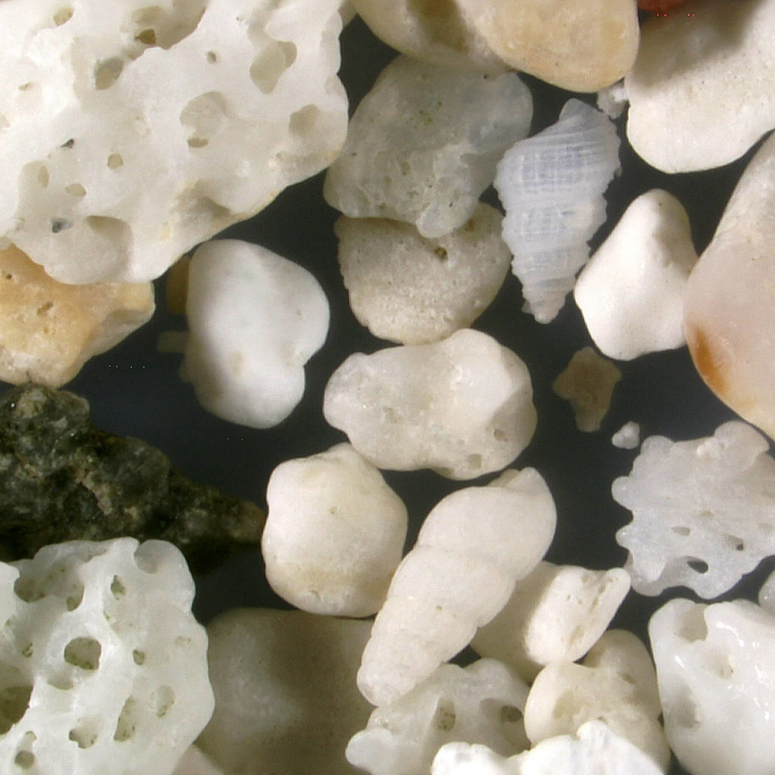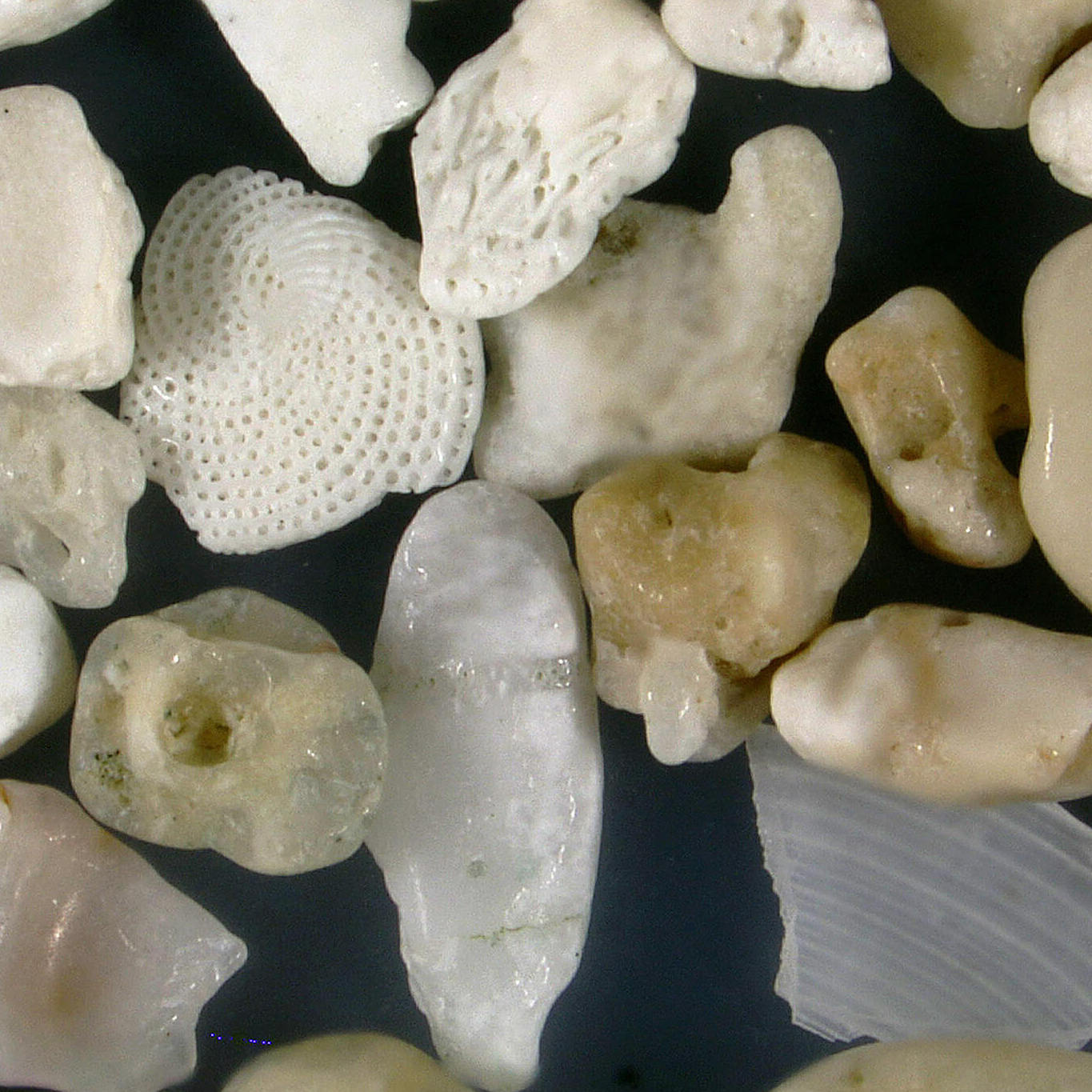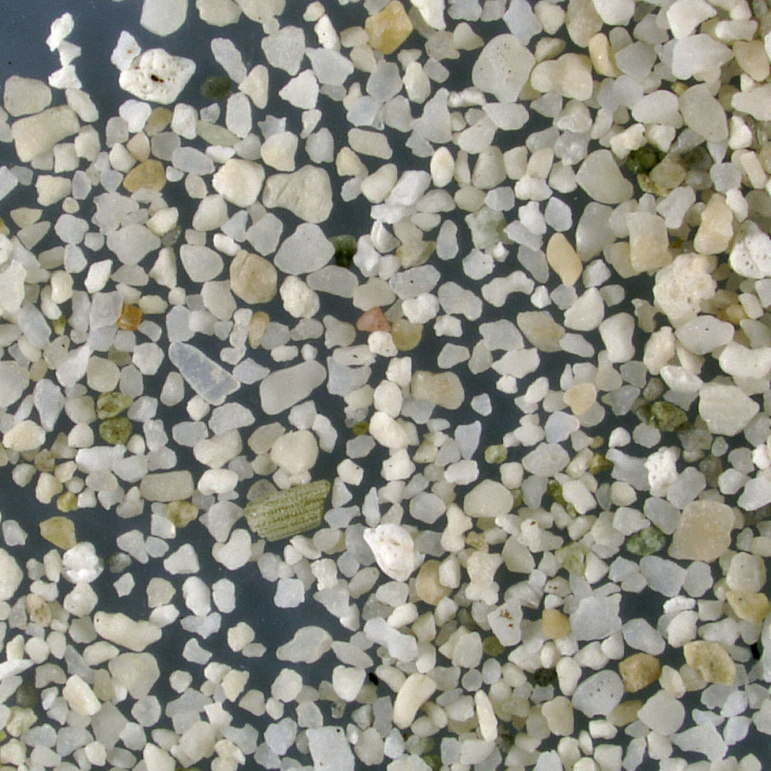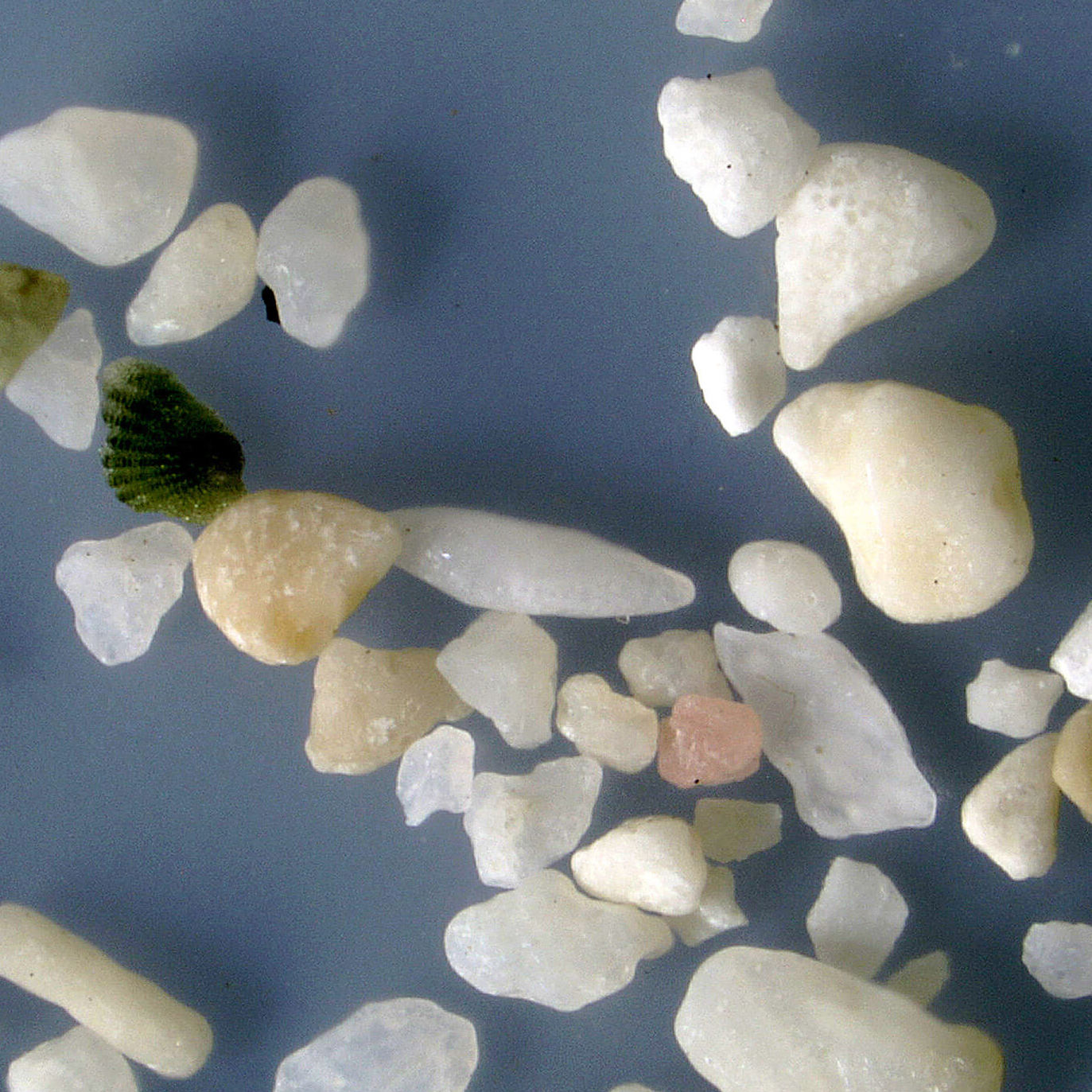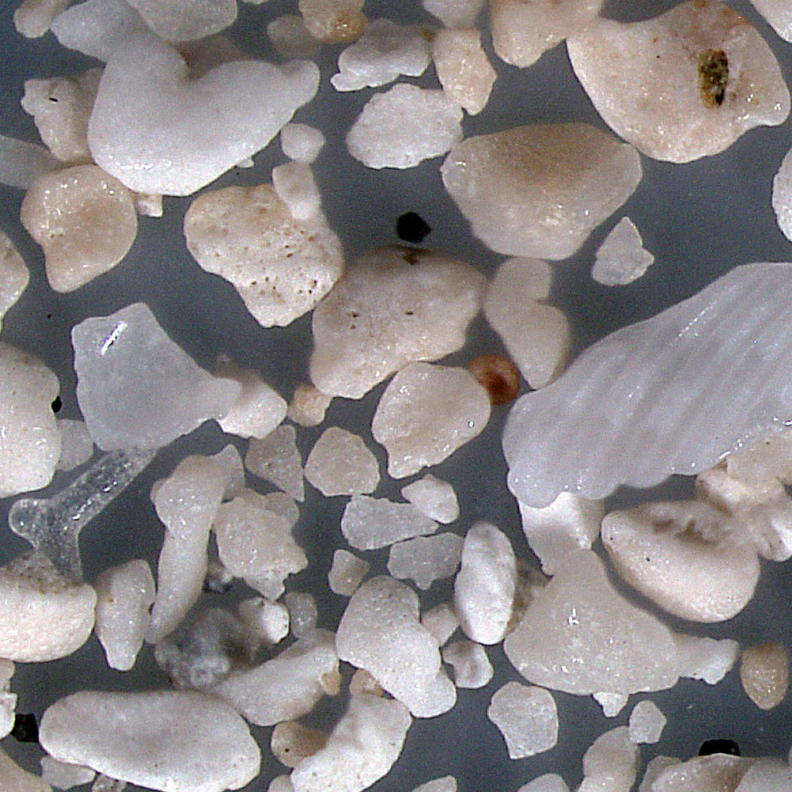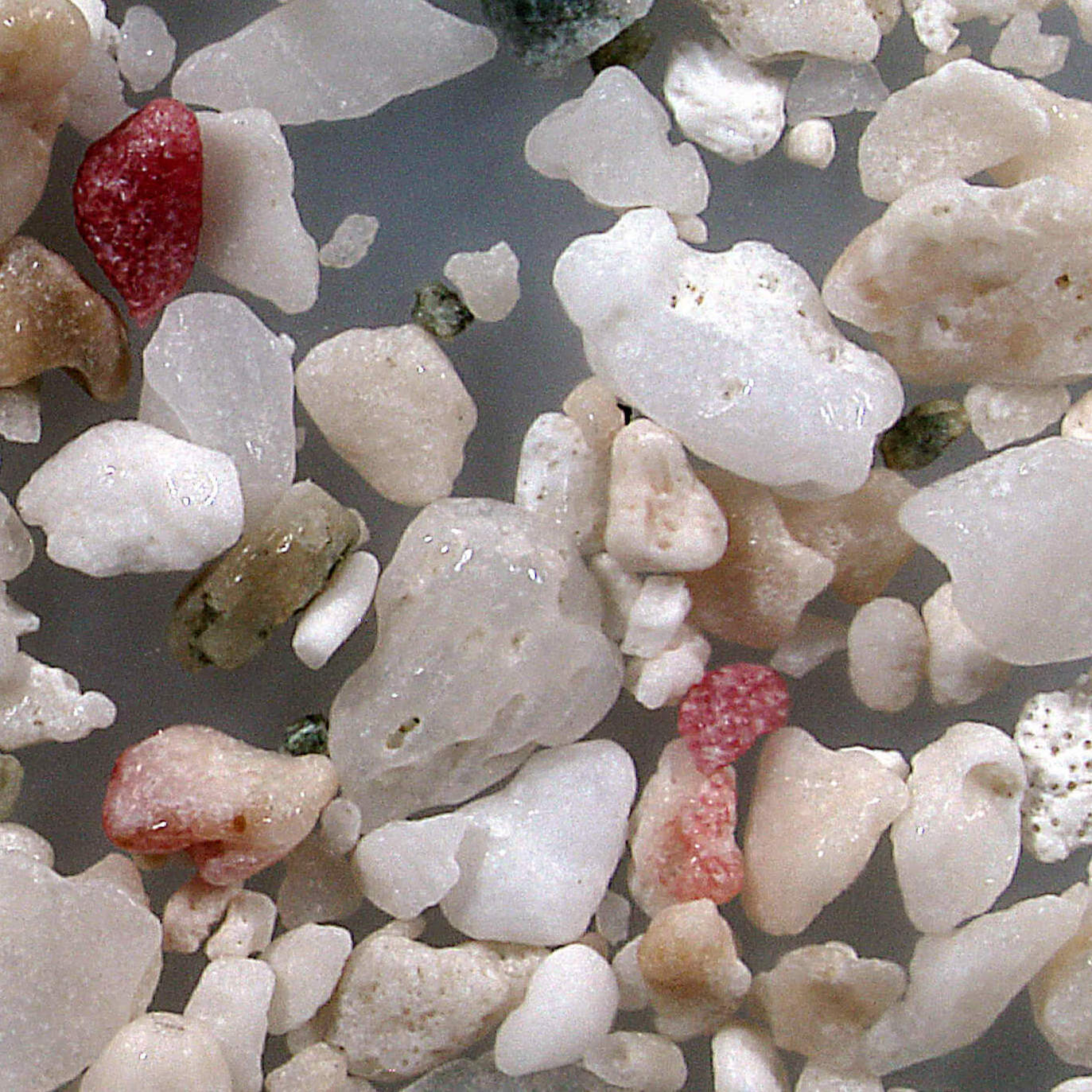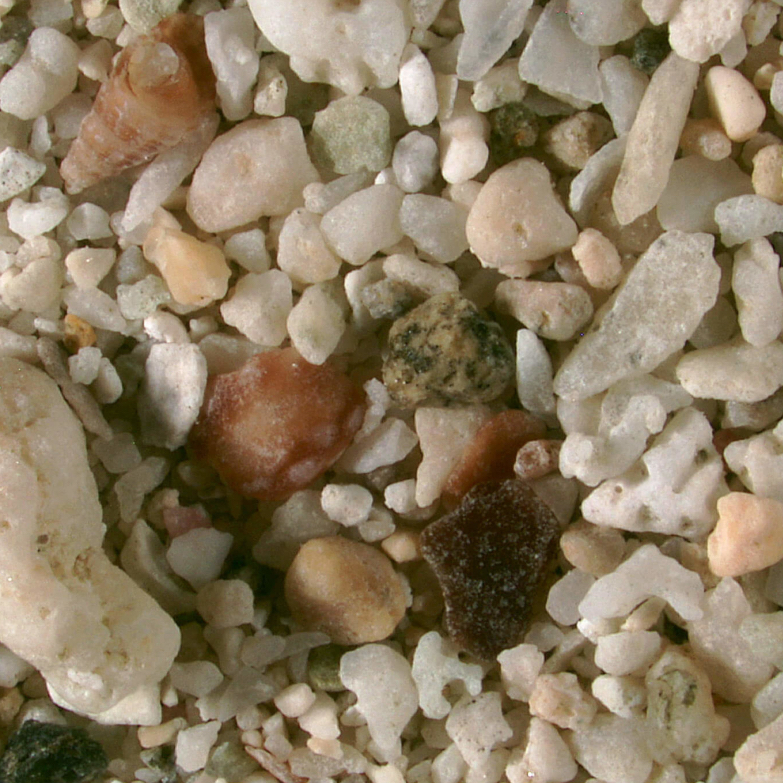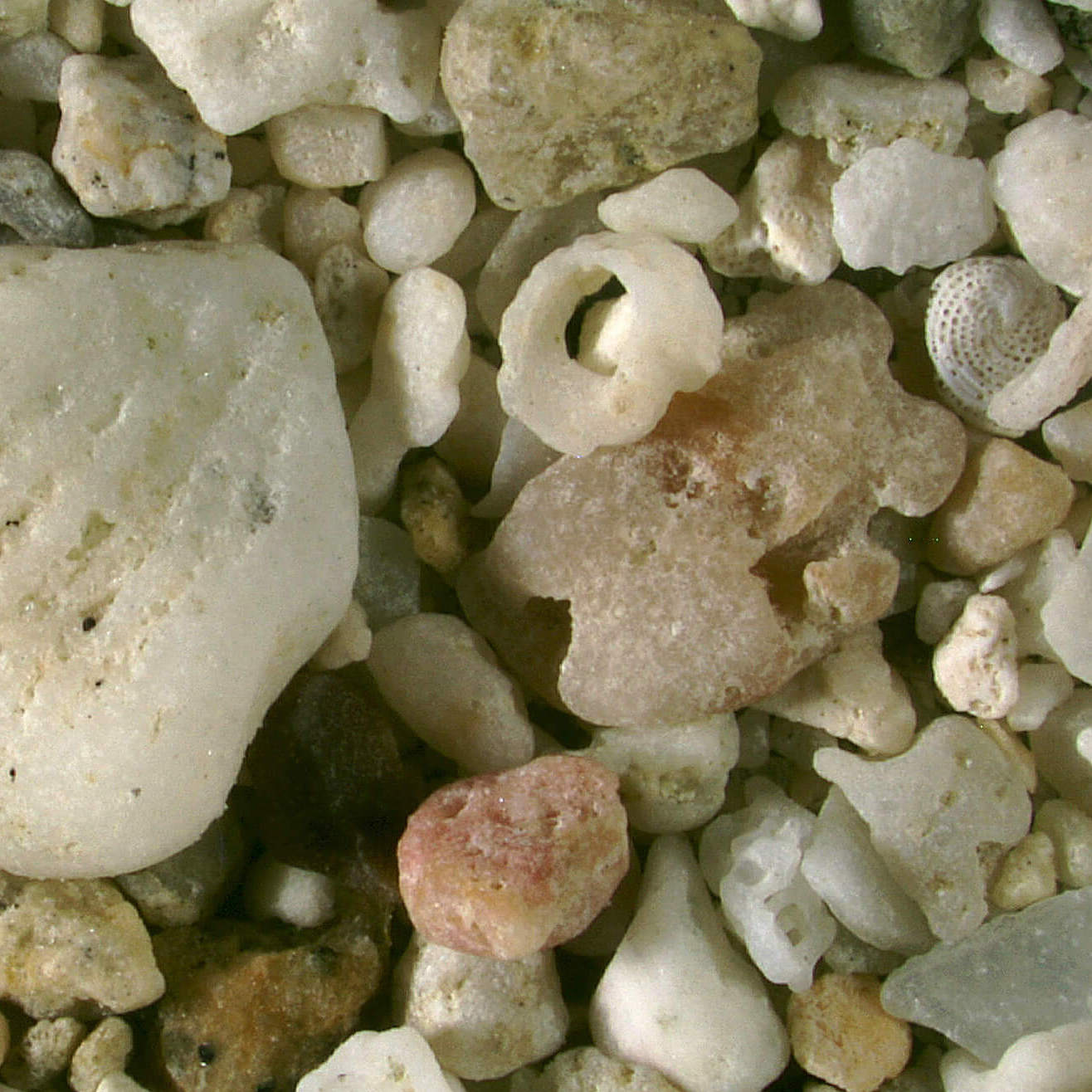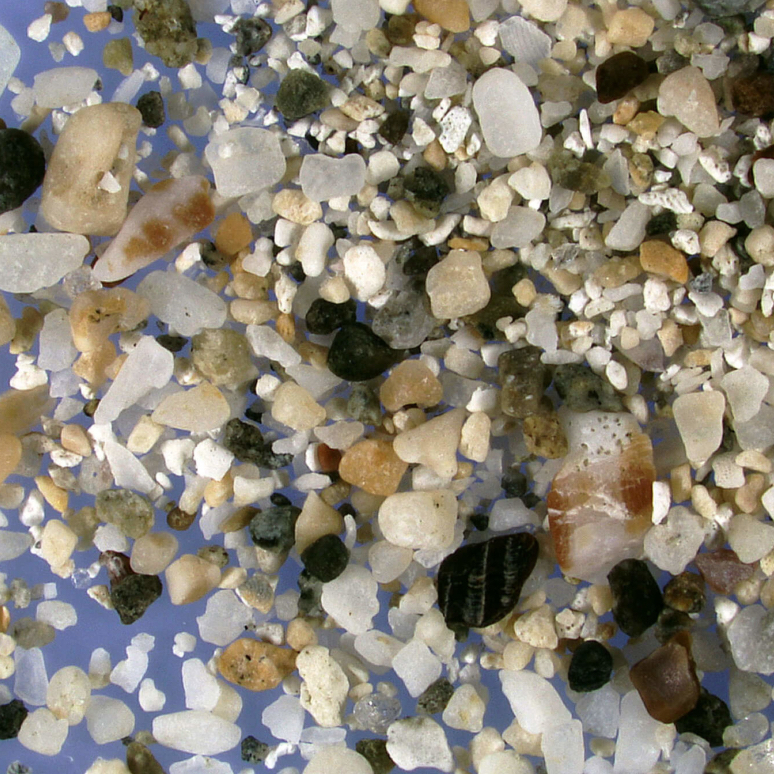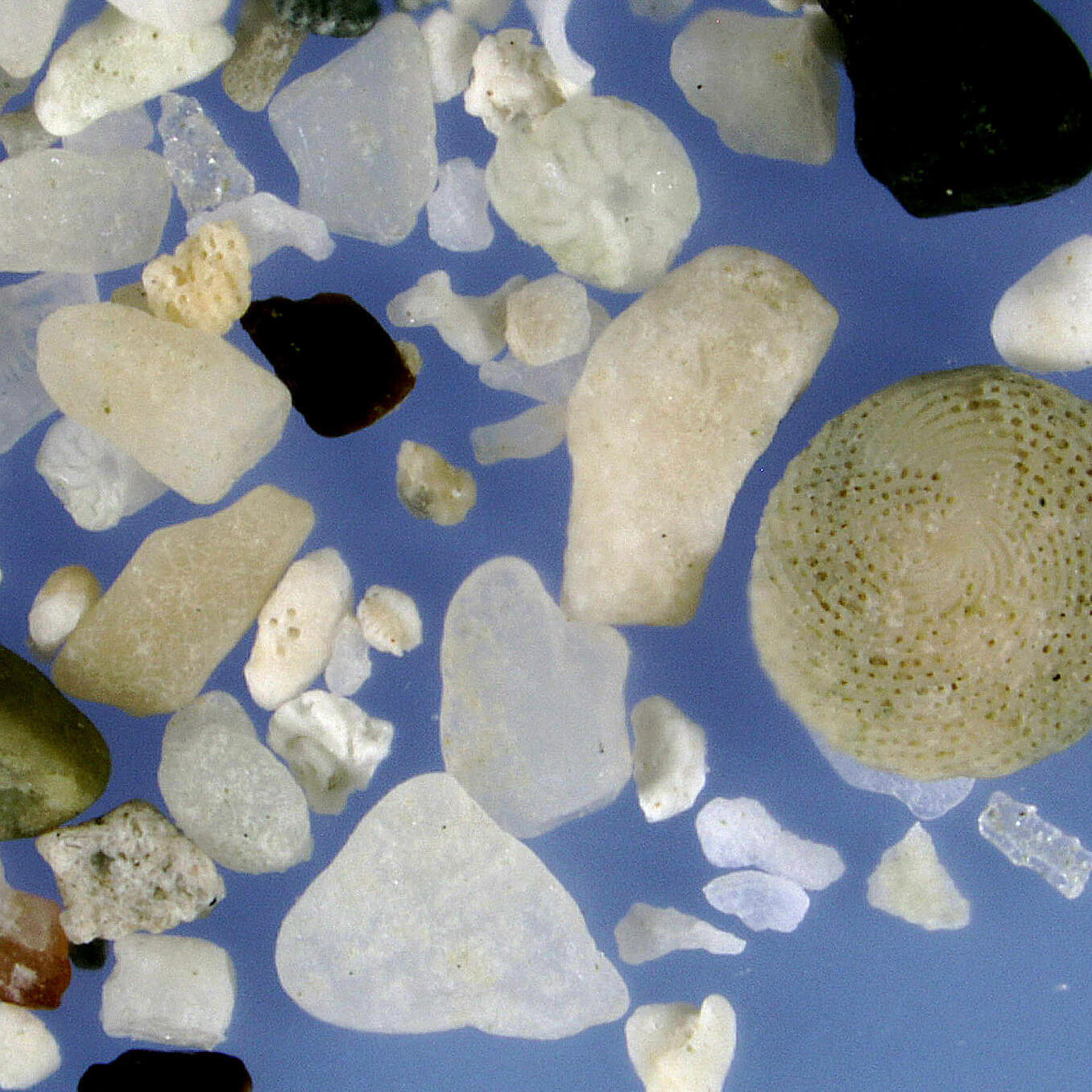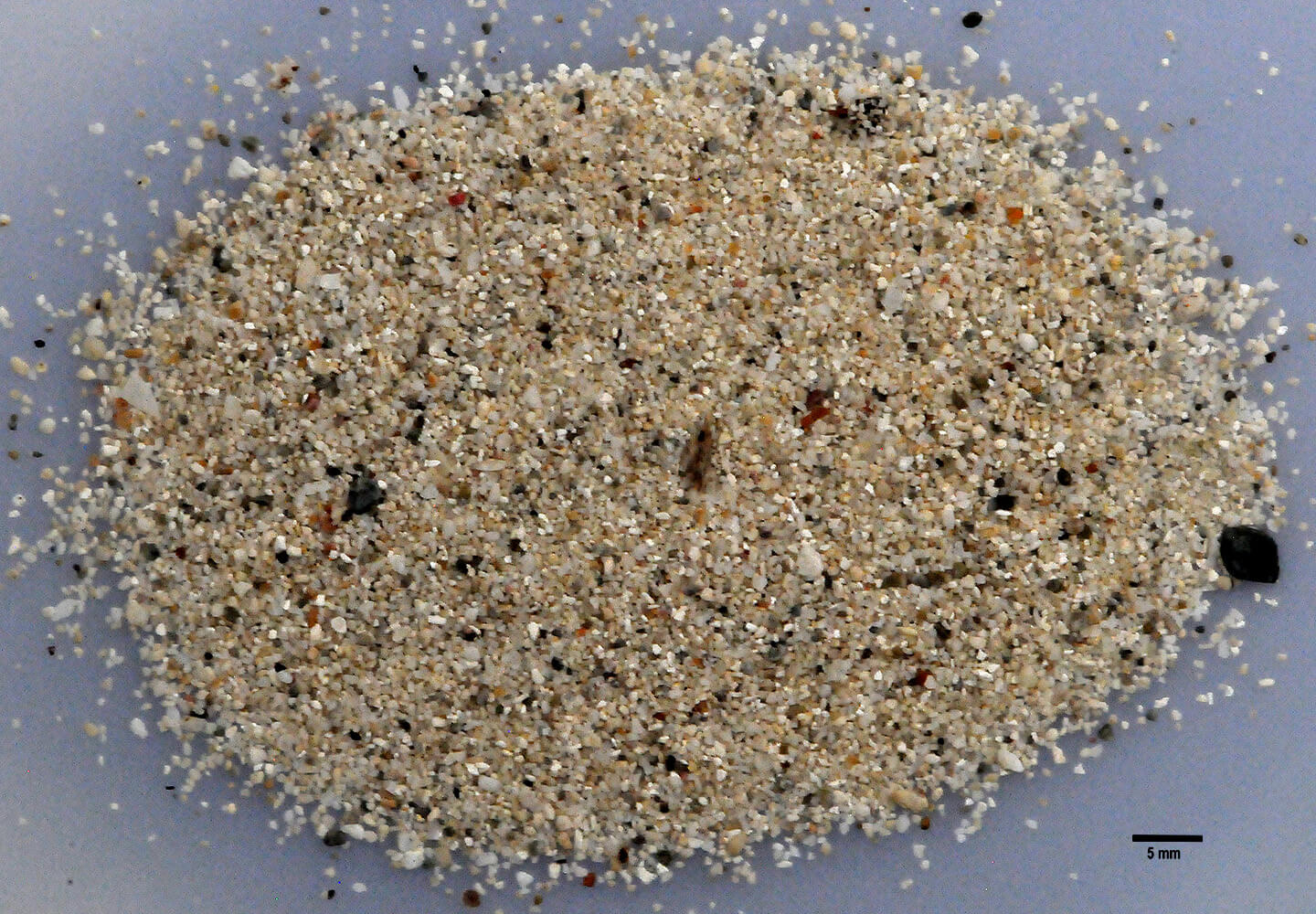
Although St. John is a volcanic island and part of a submarine mountain range extending from Cuba to Trinidad, sand on recreational beaches is primarily biogenic. Occasional black sand grains of volcanic origin are intermixed with a variety of white, tan, and reddish-brown grains of mollusks, white calcium carbonate skeletal remains of bleached coralline algae and other shell fragments.
Geographic Overview
Only 9 miles long and 2 miles wide, St. John boasts of lush emerald mountains, hills and valleys without many flat areas, and soft white coral sands on numerous near-deserted tranquil beaches. The coast has coral reefs full of sea life with coastal areas characterized by many protected bays. Approximately 60% of the island is the protected Virgin Islands National Park, administered by the United States National Park Service.
Sand Gallery
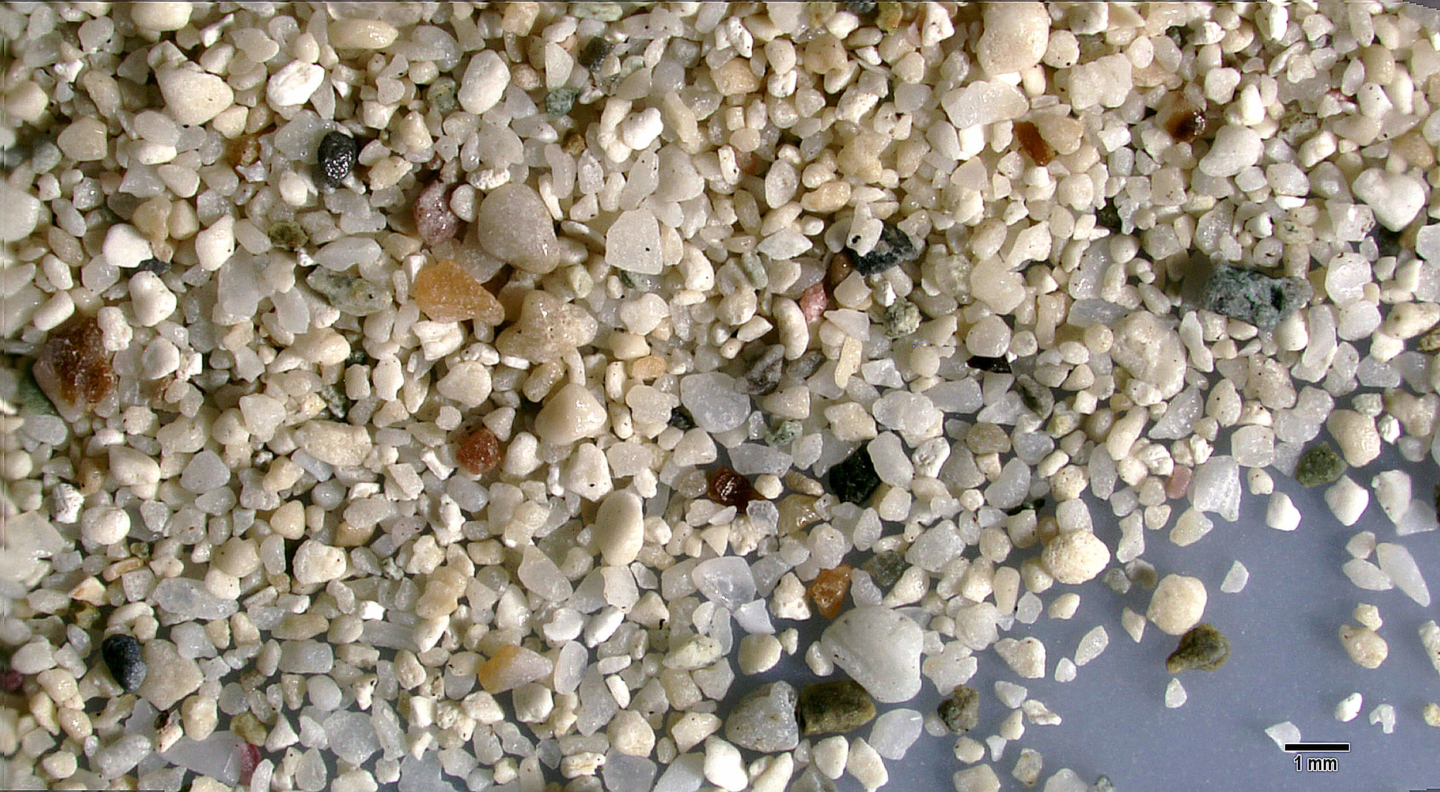
The majority of sand grains in this low magnification view are biogenic in origin representing fragments of algae, coral and shells. A brownish encrusting foram, Homotrema rubum is attached to a shell fragment at the 9 o’clock edge of the image. Occasional dark gray and black grains are probably of geologic origin; one is a rectangular grain present at the 3 o’clock edge of the image.
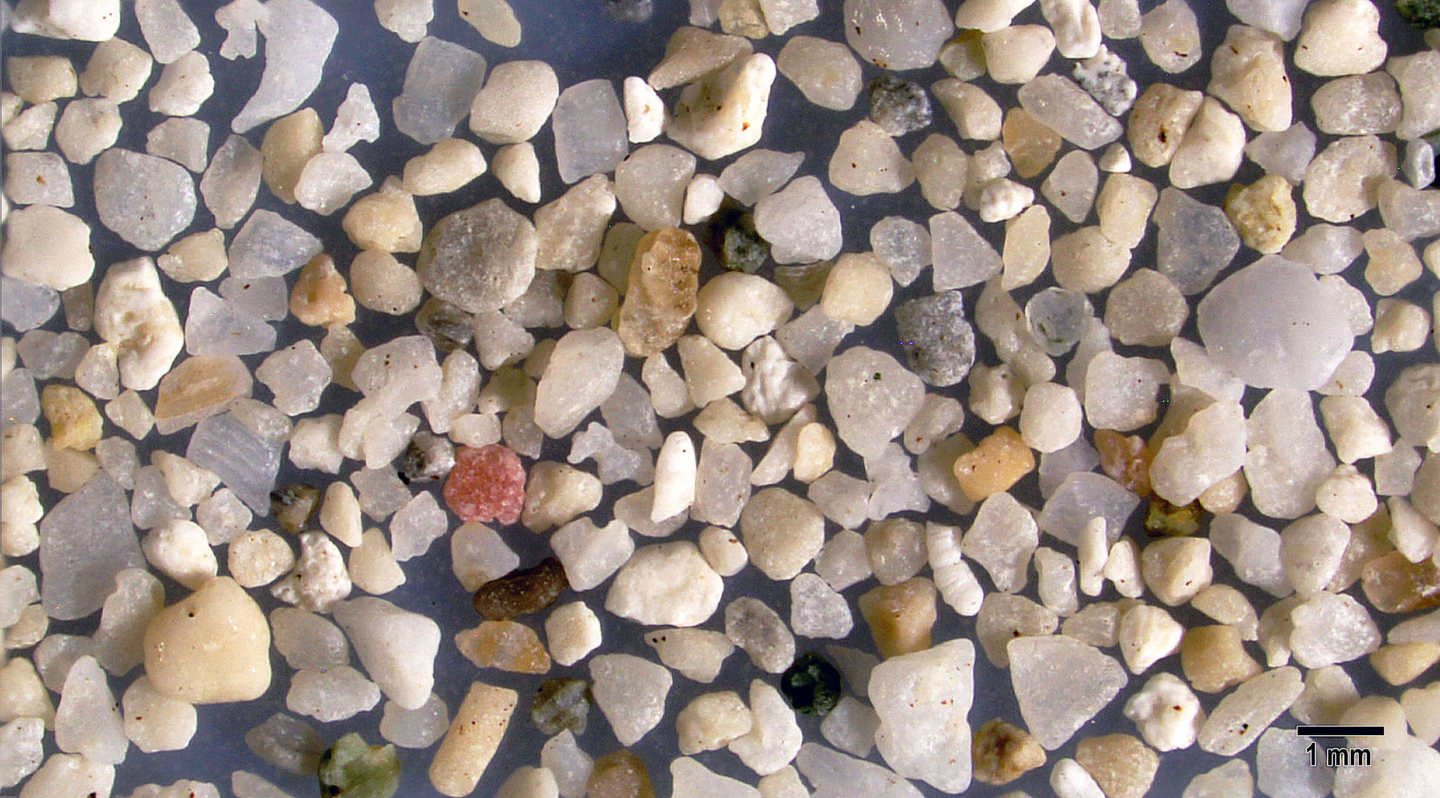
A red Homotrema sp. foram is present to the left of center. A translucent mollusk fragment with barely visible parallel white lines to the left of the red Homotrema has been worn smooth by wave action. Off white and tan sand grains are worn fragments of coral and marine algae.
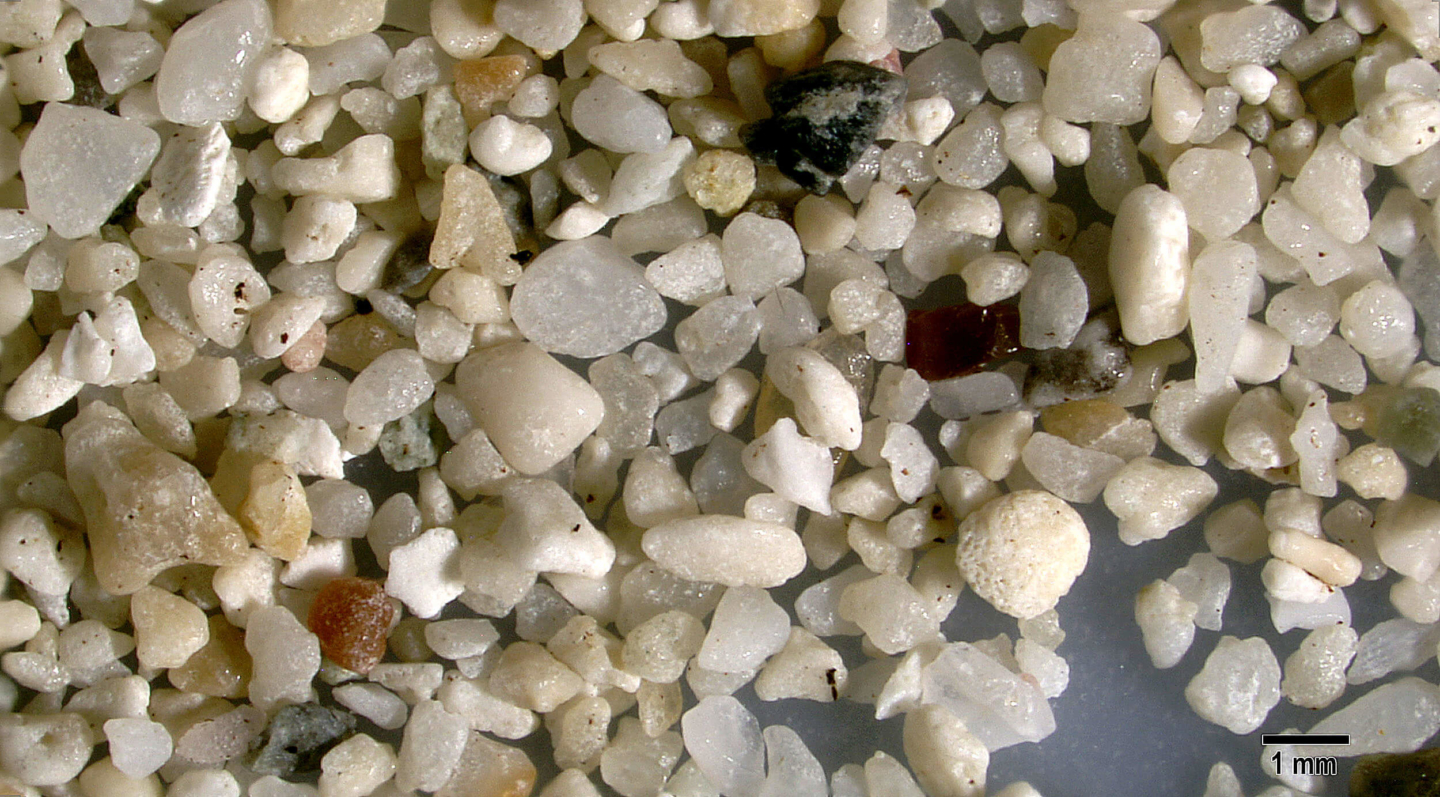
A black and gray grain of volcanic origin is present near the top center and a finely dimpled off white circular partly eroded foram grain can be seen on the right center of this image. The remaining grains are fragments of different corals and coralline algae.
